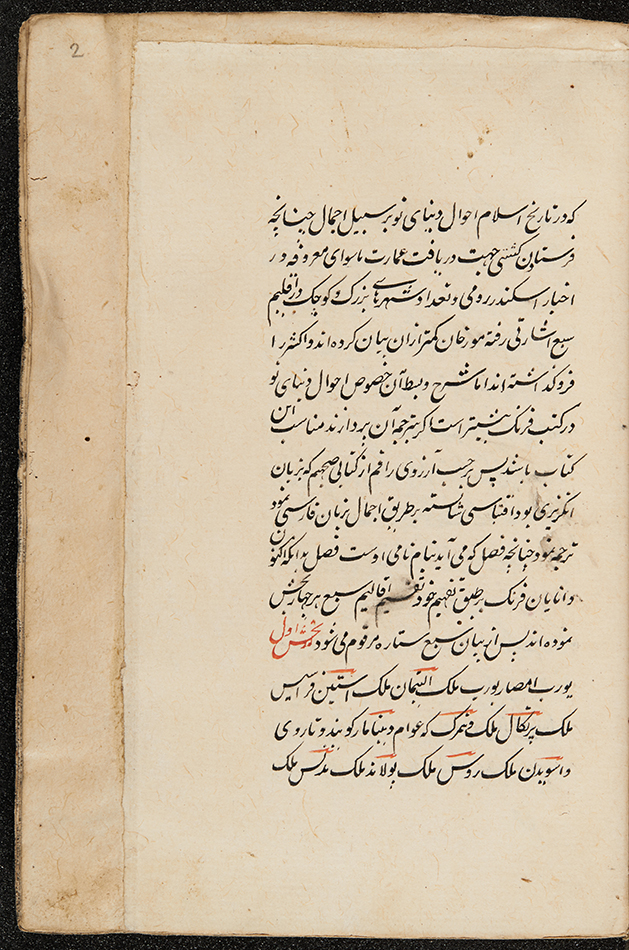Surprising Islamic Manuscripts at St Andrews
Thanks to a generous grant from the Honeyman Foundation, Farshad Sonboldel, PhD student in modern Iranian literature, was tasked with reviewing the catalogue records for the Persian and Arabic manuscripts held within the Oriental Manuscripts Collection in Special Collections, which also has texts from Turkey, Israel, South East Asia, China, Tibet and Africa. Some treasures of this collection have featured on the blog before, including the beautiful royal Qur’an from the early Safavid era, ms19(o), the Book of Wonders, ms32(o), the Bustan of Sadi, ms31(o) and the Shah Namah, ms28(o). This project set out to discover what other important manuscripts the collection contains and bring them to light for scholarship. This is Farshad’s report on what he found.
**
Recently I carried out a project of re-cataloguing the Oriental Manuscripts collection, revising the old records and undertaking historical research to seek out background information. I used online resources to compare the St Andrews versions of each text with others available elsewhere. In the final step, I prepared XML records in English, Arabic and Persian for the online catalogue of Islamic manuscripts, Fihrist.
In this project, I worked on about 40 Persian and Arabic manuscripts, many gathered by either Alexander Mackie Honeyman (1907-1988), professor of Oriental Languages here in St Andrews, or General William Tweedie (1836-1908), who served in the Bengal Staff Corps, was Political Resident in Turkish Arabia and H.M.’s Consul-General at Baghdad. I have picked out some highlights which are worthy of further research.
Geographical work, ms43(o)
- ms43(o)
- ms43(o)
This is a complete copy of Mortaza Hossain (Allah-yar) Belgerami’s work on the geography of the world and introducing the ‘New World’ to the Muslims, written between 1782 and 1784. The volume contains two books from the same author, one transcribed in 1212/1797 by [Jaqar] Mula La’l in Lucknow, India, and the other one in 1209/1794 by an unknown scribe.
The first book is an epilogue on the author’s famous geographical book Hadiqat al-Aqalim. The author asked his friend Captain Jonathon Scott (1754–1829) to critique his work, and he identified a lack of information about the new world in the book. By ‘new world’, Belgerami means western Europe and America which had not been described in any Islamic geographical works prior to this book. The first chapter, which is the most significant part of the book, is a translation from Scott’s writings, filling the gaps in Hadiqat al-Aqalim. The second book is also based on information conveyed by Scott to the author although it is not directly translated from his writing. This manuscript is currently in the process of being edited by the writer of this post.
Akhlaq-e Mohseni, ms30(o)
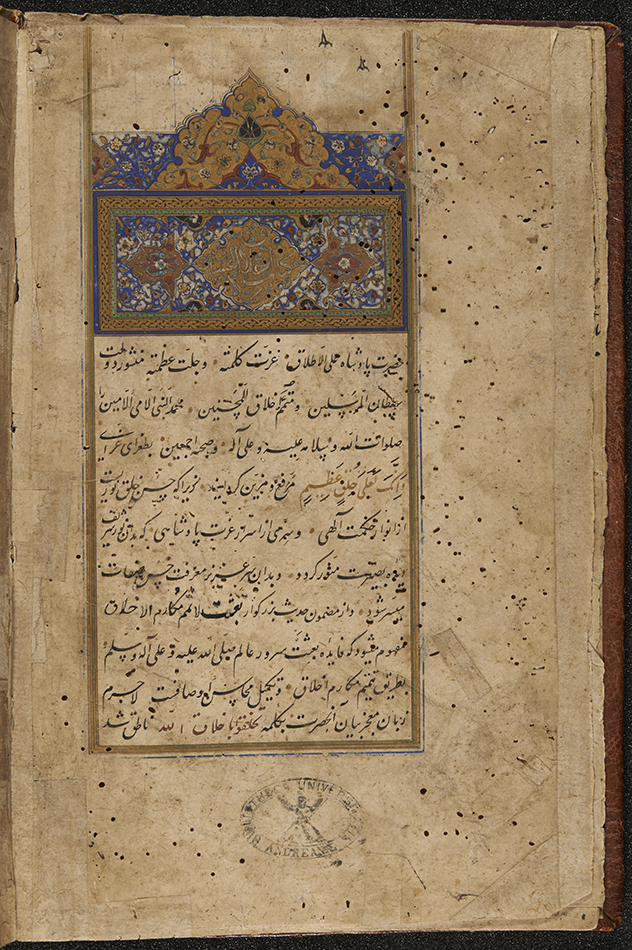
This book is one of the best-known Persian ethical works and was initially composed in AH [Anno Hegirae] 900/AD 1495 by Kamal al-Din Husain ‘Ali Wai’z Kashifi (d. 910/1504-5) and dedicated to Abu l’Mohsen, a son of Abu ‘l Ghazi Sultan Husayn Baykara. The copy preserved in St. Andrews was created in AD 1548, only fifty years after the composition of the original. The copy was made by Mahmud al-Kateb of Herat and dated ‘the last days of Rajab’, AH 955/early September AD 1548. Although this is one of the oldest copies of this book, it is in excellent condition and should be considered in further research on editions of Akhlaq-e Mohseni.
Divan of Qasim al-Anvar, ms29(o)
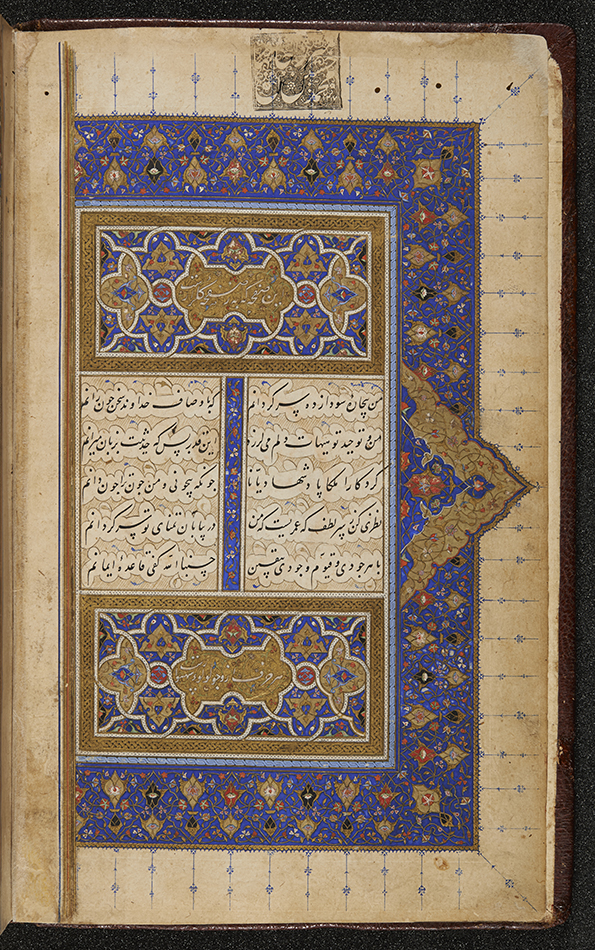
This late 17th century volume of mystical Sufi poetry by Moein al-Din ‘Ali Hosseini Sarabi Tabrizi (AH 757/AD 1356- AH 837/AD 1433), is beautifully illuminated with borders in blue and gold. This copy by Pir ‘Ali Jami, in the first days of Sha’ban, is from the royal library of Abu’l-Mozaffar Soltan Hosain Bahador Khan, the last Safavid king (1694-1722). The last owner of the volume, Eqbal al-doleh, dedicated the copy to William Tweedie in Baghdad 14 June 1883 (8 Shaban 1300). There are also single verses and robaeis by Halati Torkamani (died in 1592).
Collection of Persian Letters, ms27(o)
This collection consists of 100 personal letters, financial aid requests, invoices, bills etc. from the 18th and 19th centuries, among which a few are written by famous figures of the age. A note attached to the front cover, probably by General William Tweedie, states: ‘many of [these letters] fell into the hands of our troops in the Persian war of 1856.’ Also, inside the back cover, a poem was attached from a poet called Fadaei acknowledging the merits of the English nation. Here is the description of some highlight letters of the collection:
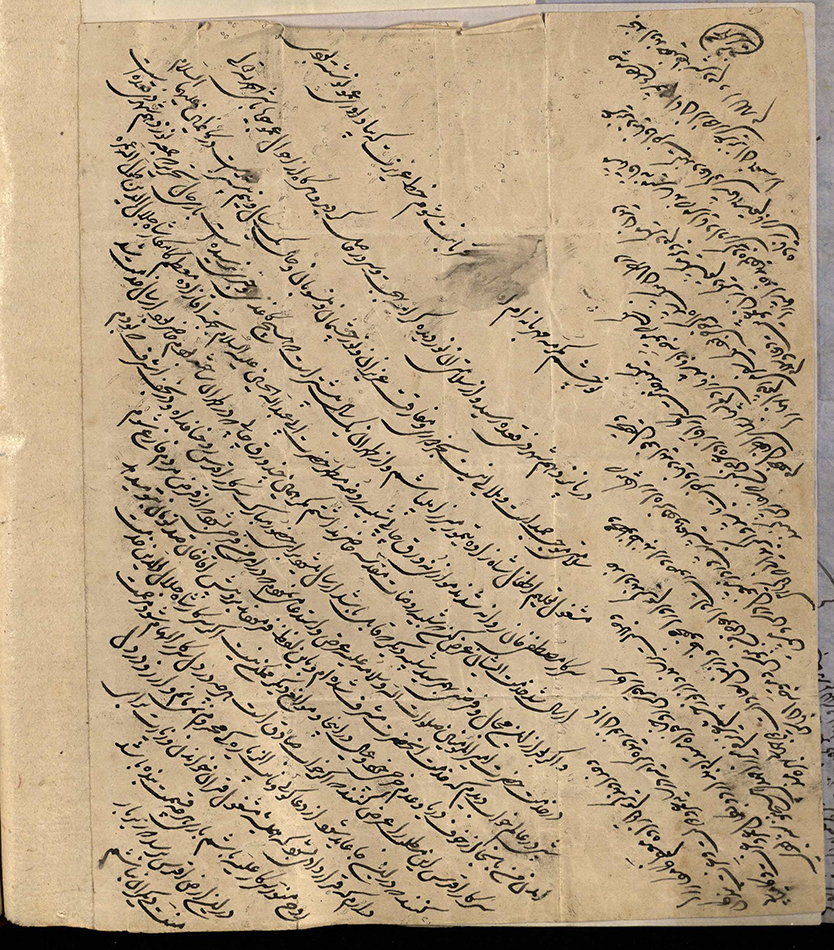
This letter is from an uncle to his niece, asking her to intercede with her husband to obtain money from the Agha Khan (1807-1865). The writer is perhaps a religious poet or passion play writer as he attached nine pages of a passion play as a gift to Shah Jalal al-din. This suggests that the writer is Mohammad Rafie’ Tabatabaei Nazem al-olama; however, based on his date of birth (1835) he was probably too young to be the writer of this letter.
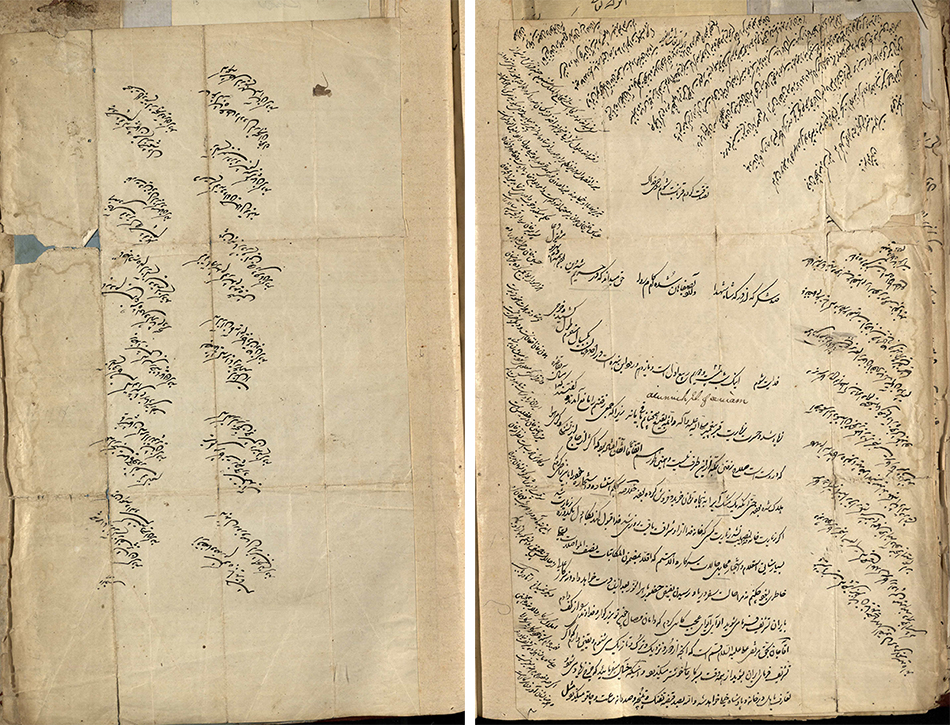
This is a letter to Aqa Khan, the first the leader of Aqakhnieh Ismaili Shias (died in 1881), who sought refuge to India. The writer encourages Aqa Khan to come back to Iran and provides a report about some figures (probably advocates) and their current status. He tries to assure Aqa Khan that he would be safe and respected in Iran by citing words from the Shah and some other governors. He refers to many of the leading figures of the day.
There are other manuscripts in this collection which are worth introducing for further research in different fields. These include a Persian collection of medical treatises by Yusufi in prose and poetry, ms66(o); an early copy of the Baharistan of Jami, ms23(o), copied in 1587; and an unknown commentary on Nizami’s Iskandarnameh, ms67(o). These resources are now more accessible, and this project has paved the way for further research. The new catalogue records, with images, and digital images of some full texts will be available shortly.
Farshad Sonboldel
School of Modern Languages
